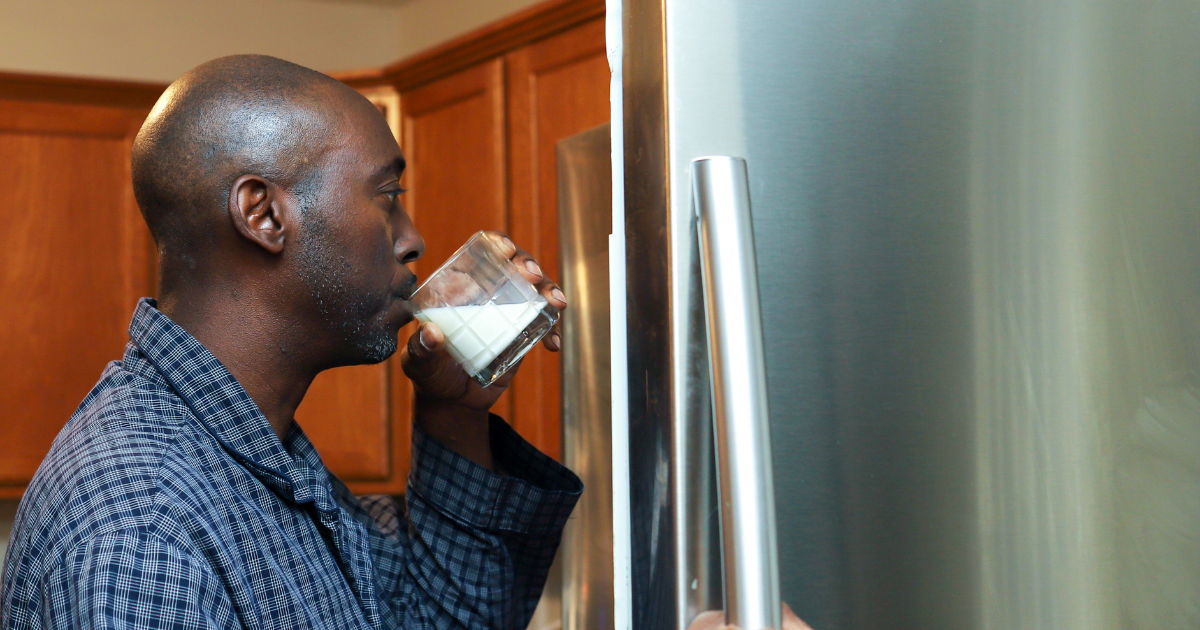9 vitamin D deficiency symptoms (and 11 high vitamin D foods)

Vitamin D is a fat-soluble vitamin essential for health. It keeps your bones strong, can improve your mental health and helps you sleep. According to the National Institutes of Health, almost 1 in 4 U.S. adults are considered low in vitamin D. Symptoms depend on how severe the deficiency is and the person.
Primary care doctor Mindy Lacey, MD, screens for this condition in patients struggling with fatigue, depressive symptoms and bone issues. "Vitamin D deficiency has become more common over the past several years," explains Dr. Lacey.
Here Dr. Lacey shares what vitamin D deficiency looks like – and three ways to overcome it.
Symptoms when vitamin D is low
"Most patients with vitamin D deficiency are asymptomatic, however if you're exhausted, your bones hurt, you have muscle weakness or mood changes, that's an indication that something may be abnormal with your body," says Dr. Lacey.
Symptoms of vitamin D deficiency may include:
- Fatigue
- Not sleeping well
- Bone pain or achiness
- Depression or feelings of sadness
- Hair loss
- Muscle weakness
- Loss of appetite
- Getting sick more easily
- Pale skin
If any of these symptoms sound familiar, see your primary care provider. They may do a blood test to check your levels of vitamin D. "The blood test will tell us whether you're within normal ranges of vitamin D or whether it's too low," says Dr. Lacey.
5 foods naturally high in vitamin D
Fish is the best source of vitamin D in the wild.
- Fatty fish like salmon, trout, tuna and mackerel
- Canned fish like herring and sardines
- Egg yolks
- Beef liver
- Fish liver
6 vitamin D fortified foods
Since there aren't a lot of naturally occurring vitamin D foods, many products are enriched with vitamin D. Check the nutrition label to make sure there's vitamin D added.
- Breakfast cereals
- Milk
- Almond milk
- Soy milk
- Orange juice
- Oatmeal
The vitamin D challenge: Getting it from sunlight
When your skin is exposed to ultraviolet rays from the sun, your body creates its own vitamin D. "When you're out and about, use sunscreen to cover sensitive areas. But a little bit of sun is good for everybody," says Dr. Lacey.

Where you live matters. If your home is farther away from the equator (like the northern United States), you need to spend more time in the sun to produce enough vitamin D. If you don't get regular sunlight in the winter months, you may need to increase your dietary intake or take a supplement.
Are vitamin D supplements safe?
Yes. "A vitamin D supplement doesn't cause many adverse effects at recommended doses," says Dr. Lacey. "What you don't use, your body usually urinates out, so it's difficult to overdose on vitamin D, unless you are taking massive doses."
Side effects of vitamin D supplements may include constipation and dry mouth.
Extremely high levels of vitamin D are harmful, and can cause nausea, vomiting, confusion, excessive thirst and kidney stones. Vitamin D supplements can interact with certain medications, so check with your doctor before starting one.
Are vitamin D and D3 the same?
Vitamin D has two main forms: D2 and D3. You can absorb both types in your body, but studies have shown that vitamin D3 raises your levels more effectively than vitamin D2. "I personally recommend over-the-counter supplements that contain vitamin D3," says Dr. Lacey. You can also take a cod liver oil supplement if you'd prefer that to a pill.
"The Recommended Dietary Allowance (RDA) of vitamin D for children 1 to 18 years, pregnant women, and nonpregnant adults through age 70 years is 600 international units. After age 70, it is recommended to increase to 800 international units," says Dr. Lacey. "If your levels are severely low, there is a prescription-strength dose of vitamin D."
Who is more at risk for vitamin D deficiency?
People with darker skin are much better protected from UV rays – but also need to spend longer time in the sun to produce the same amount of vitamin D as people with lighter skin would. "The non-Hispanic Black population generally has higher rates of vitamin D deficiency," says Dr. Lacey. "The darker your skin, the less vitamin D you make from sunlight exposure." Older persons who are confined indoors, people who are obese, those with known osteoporosis and people with malabsorption disorders like celiac disease or inflammatory bowel disease are also at risk for vitamin D deficiency.
Breastfed infants need additional vitamin D too. "Infants up to 12 months should consume 400 international units (10 mcg) daily, because the vitamin D content of human milk is low. If parents don't want to give their infant a supplement, the breastfeeding parent can take a supplement themselves to fortify their milk," explains Dr. Lacey. "Most infant formulas contain at least 400 international units/L of vitamin D, so formula-fed infants will also require supplementation to meet this goal, unless they consume at least 1000 mL daily of formula."
How to get more vitamin D
Insufficient vitamin D can make your bones soft and brittle. Here are three ways to increase your intake:
- Eat foods high in vitamin D, like fish or fortified breakfast foods (milk, cereals and orange juice).
- Get vitamin D from moderate sunlight exposure each day.
- Take a vitamin D3 supplement or cod liver oil.
Call 800.922.0000 or schedule online to make an appointment with a primary care provider.







